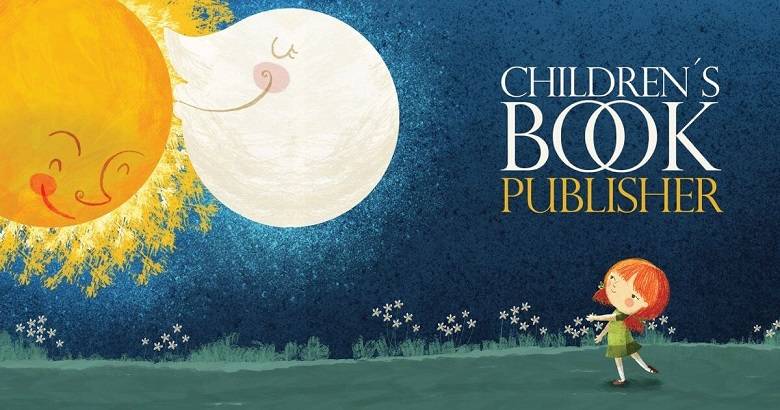Many aspiring writers and illustrators dream of publishing their own children’s books. Influencing young brains through innovative stories and colorful visuals is appealing. However, navigating the complex world of children’s book publishing can be difficult without the correct help. From design to distribution, each stage demands meticulous planning and execution. This comprehensive guide will walk you through the most important components of publishing a children’s book, giving you the information and confidence to take on this wonderful adventure.
Understanding Your Audience

Before publishing, it’s important to identify your target audience: children. Children’s literature spans multiple age groups, from picture books for toddlers to middle-grade novels for preteens. Every age group has different tastes, comprehension skills, and interests. Tailoring your book’s content, language, and pictures to the desired age range is critical to its success.
A picture book can focus on simple language, bright graphics, and repeating storytelling to interest babies’ growing senses and linguistic skills. A middle-grade novel, on the other hand, may explore more complicated subjects and character development to appeal to older readers dealing with the struggles of puberty.
Creating Engaging Content
The tale is at the core of any children’s book. Whether it’s a funny tale about talking animals or a sincere narrative about universal issues, your story should attract and engage with young readers. Focus on creating intriguing characters, a compelling plot, and a clear message appropriate for your audience’s developmental requirements.
Remember that youngsters like stories that pique their interest, elicit emotions, and entertainingly teach important lessons. Consider using humor, suspense, or adventure to keep young readers interested in the story. For example, a story about friendship and acceptance could contain appealing characters embarking on a journey filled with hardships and uplifting moments of connection and progress.
Polishing Your Manuscript
To polish your work, go through numerous rounds of editing after developing your tale premise. Pay great attention to clarity, coherence, and language level to ensure that the material is understandable and age-appropriate. If you’re not an illustrator, try working with a professional illustrator to visually bring your story to life.
Collaborations between authors and artists frequently result in synergistic storytelling, improving the work’s overall attractiveness. During the editing phase, concentrate on improving dialogue, rhythm, and narrative flow to keep young readers interested from start to finish. Seek input from beta readers, educators, or even children to gain useful insights and viewpoints on improving your text for optimum impact.
Leverage the Publishing Industry
Choosing the correct publishing path is crucial for the success of your children’s book. Traditional publishing entails sending your manuscript to literary agents or firms, which may be competitive and time-consuming. Self-publishing, on the other hand, provides more creative flexibility and autonomy but also necessitates extensive marketing and distribution efforts.
Consider the advantages and disadvantages of each technique in light of your objectives, resources, and time frame. To boost your chances of success, look into potential literary agencies or publishers specializing in children’s books and carefully read the submission rules. Alternatively, look into self-publishing platforms and services for children’s authors, which offer tools and information to assist you in negotiating the publication process on your own.
Preparing for Publication
Preparation is crucial for successful publication, whether traditional or self-published. To pursue traditional publishing, look for literary agencies and publishing houses specializing in children’s books. Create an engaging inquiry letter and carefully follow the submission rules. To ensure a polished result, consider investing in expert editing, formatting, and cover design services when self-publishing.
In addition, consider obtaining an ISBN and copyright protection to secure your intellectual property. Take the time to explore printing alternatives, paper quality, and binding procedures to create a physical book that fulfills industry requirements while improving young readers’ reading experience.
Understanding the Illustration Process
Illustrations in children’s books enhance the story and visually engage young readers. Create clear communication and a shared vision if you’re working with an illustrator. Provide precise explanations and reference photos to help guide the illustrator’s creative process while leaving room for artistic creativity.
Review rough sketches and provide critical criticism to ensure the illustrations reflect your concept and improve the storytelling experience. Consider using brilliant colors, emotive characters, and innovative situations to pique children’s imaginations and interests. Strive for a consistent visual style that represents the tone and concept of your tale, resulting in a visually appealing book that connects with young readers and leaves an impact.
Creating a Marketing Plan
Effective marketing is essential for promoting your children’s book and reaching your target audience regardless of your publishing path. Use a variety of outlets, such as social media, author websites, book signings, and school visits, to create excitement and publicity for your work. Engage with parents, educators, librarians, and book bloggers to obtain reviews and endorsements to increase credibility and exposure.
Consider organizing virtual or in-person activities based on children’s interests, such as storytelling sessions or interactive workshops. Collaborate with local bookstores, schools, and community organizations to conduct readings and author events to directly engage young readers and their families. Use compelling imagery, interesting material, and interactive activities to capture your audience’s attention and pique their interest in your book.
Addressing Distribution Channels
Getting your children’s book into the hands of readers globally is vital. Traditional publishers often distribute to bookstores, libraries, and online merchants through their existing networks and contacts. If you’re self-publishing, look at print-on-demand services, online marketplaces, and direct sales via your website or author platform.
Evaluate distribution methods based on cost, reach, and logistics to maximize your book’s availability. Consider partnering with distributors, wholesalers, or fulfillment services to improve order fulfillment and reach new markets. Use digital distribution channels like e-books and audiobooks to broaden your reach and make your content more accessible to tech-savvy readers.
Ensuring Long-Term Success
Publishing a children’s book is just the beginning of your journey as an author or illustrator. Participating in community events, author visits, and online forums can help you build long-term relationships with readers, educators, and industry experts. Continuously seek feedback and work on your craft to improve your storytelling and art abilities.
Stay current on industry trends, developing technology, and changes in children’s literature so that you can adapt and innovate in future projects. Collaborate with other authors, artists, and industry experts to share ideas and information and encourage one another’s creative endeavors. Accept the opportunity to inspire and empower young readers via the transforming power of narrative, so leaving a positive and lasting legacy for future generations.
Conclusion
Publishing a children’s book is a fulfilling endeavor that requires dedication, creativity, and perseverance. Understanding your audience, creating appealing material, navigating the publishing industry, and embracing marketing and distribution tactics can bring your vision to life and inspire young minds worldwide. Remember, while the trip may be difficult, the satisfaction of seeing your work in the hands of enthusiastic readers makes it all worthwhile. So, seize the moment, release your imagination, and go on the journey of publishing a children’s book. The beautiful state of storytelling awaits!
Frequently Asked Question
1. How do I know if my children's book idea is suitable for publication?
Consider your target audience’s age group and interests. Ensure your story is engaging, age-appropriate, and offers a valuable message or lesson.
2. Should I self-publish or pursue traditional publishing for my children's book?
It depends on your goals, resources, and preferences. Traditional publishing offers wider distribution but requires securing a literary agent and enduring a longer process. Self-publishing provides more control but demands effort in marketing and distribution.
3. How important are illustrations in children's books?
Illustrations play a crucial role in captivating young readers and enhancing the storytelling experience. They should complement the narrative, be visually appealing, and align with the book’s theme and tone.
4. What are some effective marketing strategies for promoting a children's book?
Utilize social media, author websites, book signings, school visits, and collaborations with educators and book bloggers. Organize engaging events tailored to children’s interests and leverage captivating visuals and interactive activities.
5. How can I ensure long-term success as a children's book author or illustrator?
Cultivate relationships with readers, educators, and industry professionals. Continuously seek feedback, refine your craft, and stay updated on industry trends. Collaborate with peers, engage in community events, and embrace opportunities for innovation and growth.



